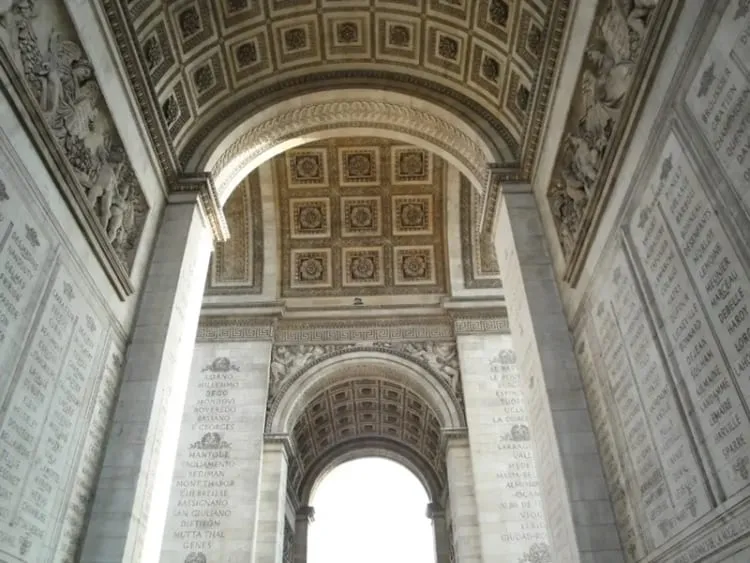Paris, the city of lights, enchants visitors not only with its magnificent beauty and ancient streets but also with its vast art treasury housed in the Louvre Museum. Here, you can admire countless paintings, sculptures, and precious artifacts, among which are the famous reliefs, deeply imbued with the historical and cultural imprints of humanity.
The Louvre Museum, originally a magnificent royal palace, has now become one of the largest and most famous museums in the world. Millions of visitors flock here each year to witness artistic masterpieces firsthand, and the reliefs are an indispensable part of the Louvre exploration experience. They are not merely decorative works but also stories told in images, marking historical events, cultural values, and aesthetic perceptions of different civilizations.
Journey to Discover Reliefs at the Louvre
Stepping into the Louvre, you will be overwhelmed by the richness of its collections. To fully appreciate the beauty of the reliefs, you should take the time to learn about their locations and meanings beforehand.
Ancient Egyptian Reliefs
One of the most popular areas for visitors at the Louvre is the collection of ancient Egyptian art. Here, you will admire reliefs from temples and tombs, depicting the life, beliefs, and power of the Pharaohs.

These reliefs are often carved on limestone or granite, with images drawn in the characteristic style of ancient Egypt: figures with bodies in profile, eyes facing forward, gods with animal heads, and mysterious hieroglyphic scripts. They are not only works of art but also invaluable historical documents, helping us better understand this brilliant civilization.
Ancient Greek and Roman Reliefs
The Louvre Museum also boasts a large collection of sculptures and reliefs from ancient Greece and Rome. These reliefs were often used to decorate public buildings, temples, and tombs.

They often depict mythological stories, important historical events, or simply scenes of everyday life. Greek reliefs often emphasize the ideal beauty of the human form, with graceful, balanced, and harmonious lines. In contrast, Roman reliefs are often more realistic, with meticulous and accurate details, clearly showing the character and status of the figures.
Renaissance Reliefs
The Renaissance period witnessed the revival of classical art, and this is clearly reflected in the reliefs at the Louvre. Renaissance artists learned from the Greek and Roman masters while developing their own styles, bearing a strong personal imprint.

Renaissance reliefs were often used to decorate churches, palaces, and other public buildings. They often depict scenes from the Bible, mythological stories, or portraits of famous historical figures. Renaissance artists often used the chiaroscuro technique (light and dark) to create a three-dimensional effect, making the reliefs more vivid and realistic.
Cultural and Historical Significance of Reliefs
The reliefs at the Louvre Museum are not only beautiful works of art but also historical witnesses, recording the imprints of different civilizations. They help us better understand the lives, beliefs, customs, and cultural values of ancient peoples.
Reflecting Social Life
Reliefs often depict scenes of everyday life, from farming and trading to religious festivals and wars. They show us the social organization, relationships between people, and economic and cultural activities of different civilizations.
Transmitting Cultural Values
Reliefs often contain profound messages about cultural values, such as patriotism, courage, loyalty, love, and respect for the gods. They help us better understand the ideology, ethics, and social norms of different civilizations.
Marking Historical Events
Many reliefs were created to commemorate important historical events, such as military victories, the coronations of kings, or major religious events. They help us remember glorious pages of history, important milestones in the development of humanity.
Tips for Visitors
To have a truly fulfilling experience exploring the reliefs at the Louvre, you should note a few things:
- Plan ahead: The Louvre Museum is vast, so you should research the locations of the relief display areas in advance to save time.
- Use maps and guides: The museum provides maps and guides in many languages, making it easy to find your way and better understand the works.
- Rent audio guides: If you want to learn more about the reliefs, rent an audio guide to hear detailed and interesting information.
- Wear comfortable shoes: You will have to walk a lot in the museum, so choose comfortable shoes to avoid foot pain.
- Stay hydrated and rest: Don’t forget to drink enough water and rest to maintain your health throughout your visit.
- Respect the artworks: Maintain general cleanliness, do not touch the artworks, and comply with museum regulations.
Other Museums in Paris Displaying Reliefs
Besides the Louvre, Paris also has many other museums displaying remarkable reliefs. Here are a few suggestions:
- Rodin Museum: Home to the famous sculptures of Auguste Rodin, including many impressive reliefs.
- Musée du Quai Branly – Jacques Chirac: A museum displaying art and culture from non-European civilizations, with many unique reliefs from Africa, Asia, the Americas, and Oceania.
- Musée National du Moyen Âge – Thermes de Cluny: A museum displaying medieval art, with many reliefs decorating churches and castles.

Exploring these museums will help you gain a more comprehensive view of relief art and its role in different cultures.
Conclusion
The famous reliefs in the Louvre Museum are precious gems of art, carrying within them historical stories, cultural values, and aesthetic perceptions of different civilizations. Take the time to explore and admire these works for a truly meaningful and profound travel experience in Paris. This trip is not only a journey to discover artistic beauty but also an adventure into the past, helping you better understand the history and culture of humanity.